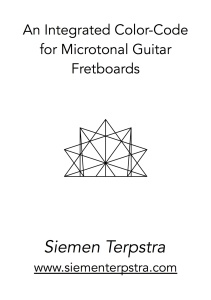 The first time that I visited Ivor Darreg (in 1981) he was living in Glendale, California. I was impressed by his amazing array of experimental instruments, but what grabbed me most was his re-fretted guitars. He had a large collection of them, guitars that he had carefully altered over the years. There were so many that it was a veritable feast to me! I had never played re-fretted guitars before, and it was almost overwhelming. Many of his guitars were pretty trashy – Ivor was not a wealthy man, but his dedication to the exploration of alternative tunings was quite impressive. A handful of them were pretty good – I think that I played all of them for a few minutes that unforgettable day. He had guitars in 19-ET, 22-ET, quarter-tone, 17-ET, and other odd divisions, but the sweetness of the 31-ET guitar impressed me most. It was also right at the `edge’ of the possible, or so it seemed to me. There were so many frets, so close together, how could you possibly put more frets on a guitar? Some years later I played a 34-ET guitar, and it largely confirmed the sentiment. From that day forward, I had an interest in 31-ET guitars.
The first time that I visited Ivor Darreg (in 1981) he was living in Glendale, California. I was impressed by his amazing array of experimental instruments, but what grabbed me most was his re-fretted guitars. He had a large collection of them, guitars that he had carefully altered over the years. There were so many that it was a veritable feast to me! I had never played re-fretted guitars before, and it was almost overwhelming. Many of his guitars were pretty trashy – Ivor was not a wealthy man, but his dedication to the exploration of alternative tunings was quite impressive. A handful of them were pretty good – I think that I played all of them for a few minutes that unforgettable day. He had guitars in 19-ET, 22-ET, quarter-tone, 17-ET, and other odd divisions, but the sweetness of the 31-ET guitar impressed me most. It was also right at the `edge’ of the possible, or so it seemed to me. There were so many frets, so close together, how could you possibly put more frets on a guitar? Some years later I played a 34-ET guitar, and it largely confirmed the sentiment. From that day forward, I had an interest in 31-ET guitars.
Although I could `noodle’ my way around the fretboard, I soon found that it was almost impossible to play because I would invariably get lost. What fret am I on, and what chord is this? I then realized that the problem could be solved if some colour-cocle would be painted onto the neck for visual guidance. Ivor had a colour-code (rather complex) for his megalyra steel-guitar, but his `normal’ guitars were generally unmarked. On standard guitars, we generally use an inlay dot at the 5th, 7th, and 12th frets as the `colour-code’, and arguably this is adequate for 12-ET, but 31-ET is so complex (rich) that this traditional system no longer proves adequate. I began several years of experiment with alternative colour-codes trying to come up with an optimal design.
In fact, I caught the `guitar-altering bug’ from Ivor, and when I was back in Canada I acquired a semi-trashy electric guitar which seemed perfect for `experimentation’. (What is there to lose?) I had never done a guitar fret job before, so I assumed that the results would be pretty bad. To my surprise, the scale turned out to be pretty close to accurate, there was only a minimum of `buzzes’, and I now had my own 31-ET guitar! At this point, my irnerest in colour-codes intensified. By 1984, I had several designs which arguably have some consistent logic underlying them. The purpose of this little article is to lay out the reasons for my chosen design. Here is why I ended up with this particular pattern.
Click on the link to see the article in your browser or right-click to save the file to your drive.
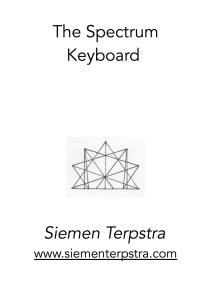 The Spectrum Keyboard is a redesigned music keyboard intended for digital synthesizers, samplers, and other electronic media applications. It is planned as a ‘musical typewriter’, making the playing of chords and scales much easier than the old black-and-white keyboard. This is the first version (1988) of the keyboard built in New York in 1991 called the Terpstra-keyboard.
The Spectrum Keyboard is a redesigned music keyboard intended for digital synthesizers, samplers, and other electronic media applications. It is planned as a ‘musical typewriter’, making the playing of chords and scales much easier than the old black-and-white keyboard. This is the first version (1988) of the keyboard built in New York in 1991 called the Terpstra-keyboard.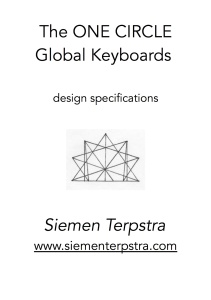 The GLOBAL KEYBOARDS refer to a complimentary pair of generalized musical typewriters for computer-based electronic media. Since the design was formulated in 1986 it has been given several names: the Spectrum Keyboards (after a discarded color scheme), the One-Circle Global Keyboards (after an essential parameter of the design), or just my generalized keyboards. The complimentary relation between the two keyboards has also led me to call them male and female.
The GLOBAL KEYBOARDS refer to a complimentary pair of generalized musical typewriters for computer-based electronic media. Since the design was formulated in 1986 it has been given several names: the Spectrum Keyboards (after a discarded color scheme), the One-Circle Global Keyboards (after an essential parameter of the design), or just my generalized keyboards. The complimentary relation between the two keyboards has also led me to call them male and female.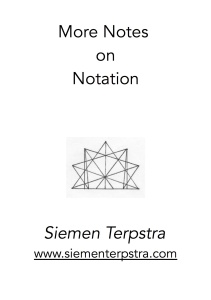 The author responds to the article “Just Inton(ot)ation,” written by Paul Rapoport and published in 1/1, Volume 7, Number 1 (September 1991).
The author responds to the article “Just Inton(ot)ation,” written by Paul Rapoport and published in 1/1, Volume 7, Number 1 (September 1991).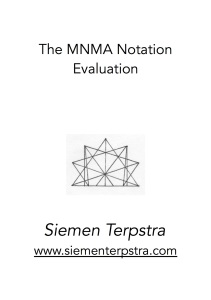 I was asked to evaluate 37 notation proposals by the committee of the MNMA. I examined all the proposals and gave their strong and weak points. Then I chose the six best and further narrowed it down to two alternatives. It was published by the MNMA in 1999.
I was asked to evaluate 37 notation proposals by the committee of the MNMA. I examined all the proposals and gave their strong and weak points. Then I chose the six best and further narrowed it down to two alternatives. It was published by the MNMA in 1999.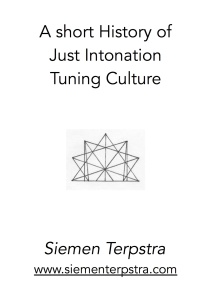 The use of Just Intonation (simple ratios) as a musical tuning norm has a very long and illustrious history. However, this history is also rather complex. I cannot hope to give but the barest outline of an overview in the abbreviated format – it deserves a book. Nevertheless, an essay is a valuable exercise in condensed presentation, although it inevitably has its price. My interpretations of the historical data are sometimes based on long strings of circumstantial evidence, since this is all the information available. Consequently, it is only possible to present a fraction of the arguments that support my conclusions within this brief context. The reader should not forget that this is only one person’s version of the most likely story.
The use of Just Intonation (simple ratios) as a musical tuning norm has a very long and illustrious history. However, this history is also rather complex. I cannot hope to give but the barest outline of an overview in the abbreviated format – it deserves a book. Nevertheless, an essay is a valuable exercise in condensed presentation, although it inevitably has its price. My interpretations of the historical data are sometimes based on long strings of circumstantial evidence, since this is all the information available. Consequently, it is only possible to present a fraction of the arguments that support my conclusions within this brief context. The reader should not forget that this is only one person’s version of the most likely story.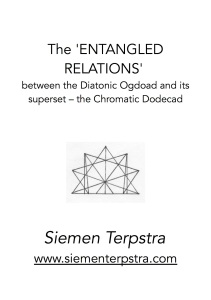 The author shows how various essential microtones rule relations between Diatonic and Chromatic harmony.
The author shows how various essential microtones rule relations between Diatonic and Chromatic harmony.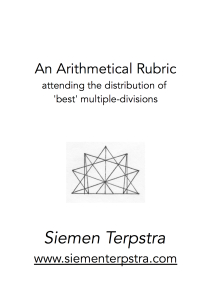 The author shows a formula that results in very good multiple divisions. An epimoric source ratio generates a specific resolution level of harmony.
The author shows a formula that results in very good multiple divisions. An epimoric source ratio generates a specific resolution level of harmony.
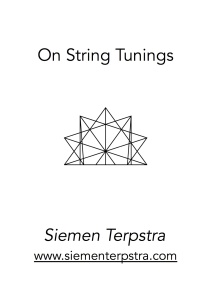 In 2002 I went to Egypt in order to observe the antiquities. While in Cairo I bought an oud (Arabic lute) for a decent price. The maker kindly showed me a couple of the preferred tunings of the instrument. It sparked my interest in further investigation. I drew up a list of the tunings of the guitar, oud and lute. Over time this list expanded as I added more instruments and extended the range from tenor (where the guitar and oud sit) to the soprano and bass extremes. The result is the list of one hundred and thirty-six tunings shown at the end of this article.
In 2002 I went to Egypt in order to observe the antiquities. While in Cairo I bought an oud (Arabic lute) for a decent price. The maker kindly showed me a couple of the preferred tunings of the instrument. It sparked my interest in further investigation. I drew up a list of the tunings of the guitar, oud and lute. Over time this list expanded as I added more instruments and extended the range from tenor (where the guitar and oud sit) to the soprano and bass extremes. The result is the list of one hundred and thirty-six tunings shown at the end of this article.